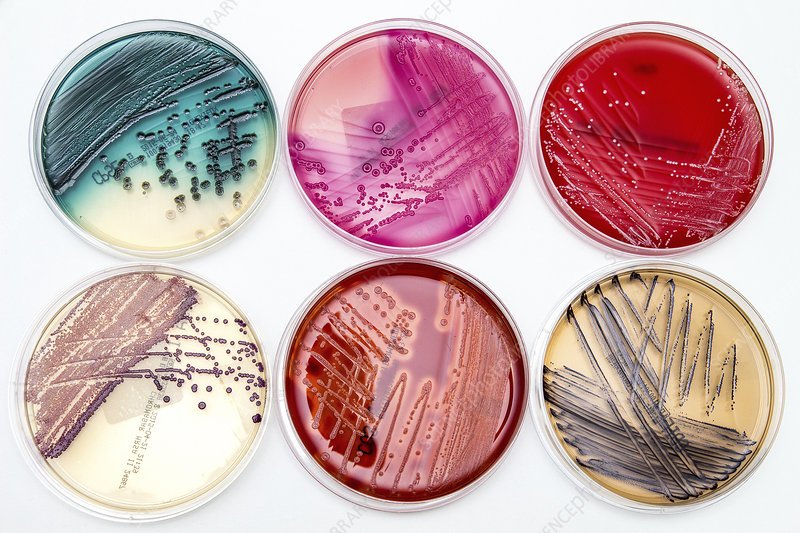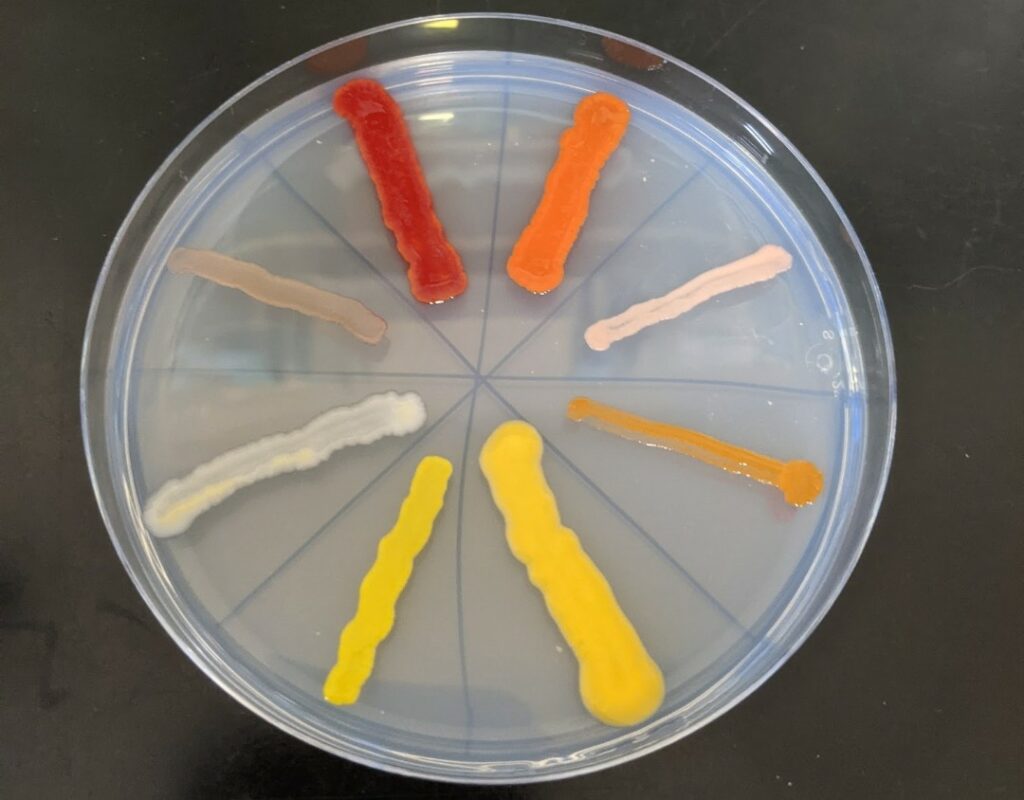Bacteria are living organisms that require specific nutrients and environments to grow. To facilitate this, in the lab we use a Jell-O-like substance called agar which is made from red seaweed. Agar is mixed with sugars, water, and nutrients to create a medium that contains the necessary metabolic needs to support microbial life. Molten agar is poured into petri dishes or tubes, and solidifies as it cools. To answer the question that all new microbiologists ask… no, it does not taste as good as Jell-O. Another thing I would like to address is that agar is commonly referred to as “agar plates” or “plates”, so I’ll be using these terms interchangeably.

The most common type of agar is called “nutrient agar”, and it contains a rich source of common nutrients that support a wide variety of bacteria. Some bacteria are picky however, and require more or less of certain nutrients, or special nutrients not found in nutrient agar in order to grow.
Two other classes of agar are called “selective agar” which often contains inhibitors that prevent growth of specific bacteria, and “differential agar” which uses dyes and indicators to differentiate the growth of specific bacteria. Often these two classes are combined into one, which we call selective-differential agar.
While selective-differential media produce vivid colours, the colours are a direct product of substrates in the agar. On these types of media, only a few colours can be produced.

Bacteria on nutrient agar however produce pigments naturally, but it is much more rare to see vivid colours. Most bacteria are white, cream or beige looking, but I have found red, pink, green, yellow, orange, gold, blue and purple! Unfortunately I wasn’t able to preserve all of the colours, as some really struggled to grow with subsequent subcultures.
If you are curious about agar, here is a link to a useful resource!
Next week I will showcase some Agar Art!

SO COOL! I had no idea what that jelly in the plates was until this blog. Bacteria and mold, while gross, is also insanely fascinating. I’m looking forward to your next post about agar art. I’m not a scientist, but the unpredictability of bacterial growth is cool to witness and I wonder if there’s a way we can utilize it to benefit us rather than creating more waste?
I’m fascinated by all the different colours of those agar plates! I had no idea that bacteria were coloured, let alone took on this many different colours. When I think of microbes, bright and colourful definitely does not come to mind. It is freaky how much the last picture looks like mustard….